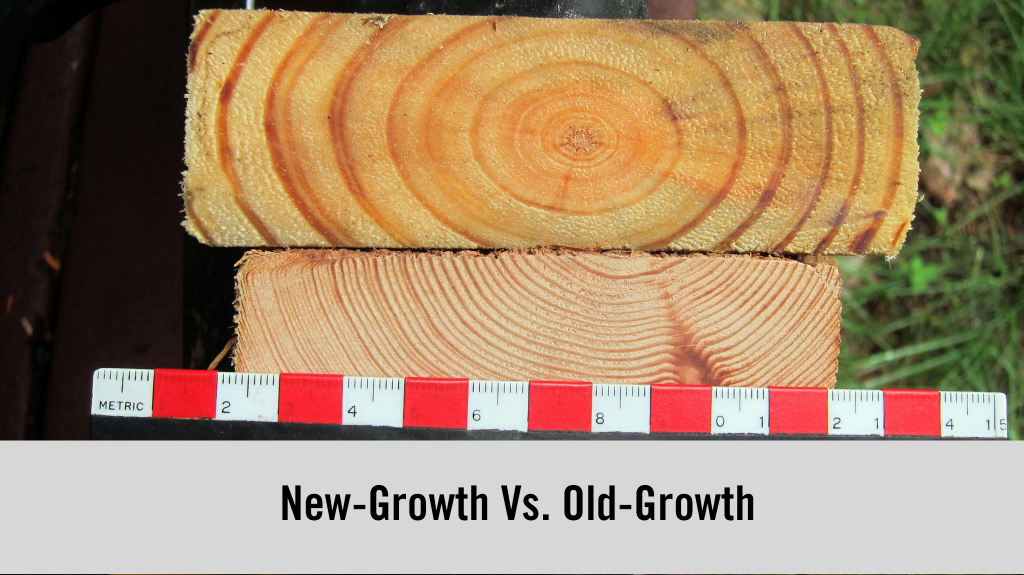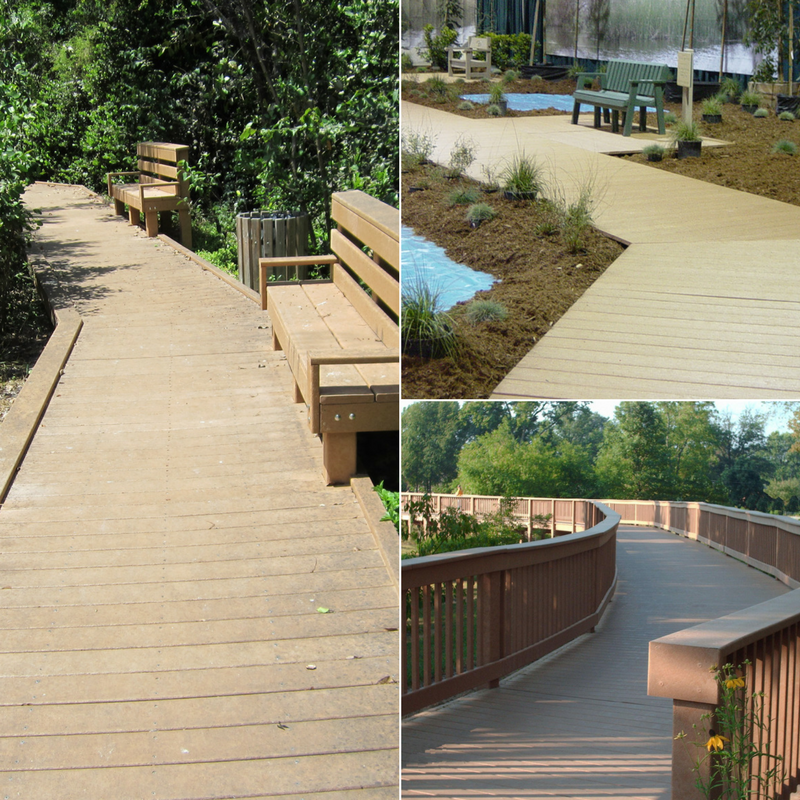Out with the Old…
This saying can be used for numerous things: replacing a worn out pair of shoes, upgrading a piece of technology and purchasing a new car or home. While this is usually a positive thought, it doesn’t apply to everything, specifically when referring to the wooden timbers used for building and construction projects.
In this particular case, “new” isn’t always the best option. You may be familiar with the terms, “old-growth” and “new-growth” when describing wood. Old-growth wood derives from forests that are naturally developed over time, has trees over 120 years old and is undisturbed by events such as fires, wind storms and logging. New-growth wood is comprised of forests and tree farms with the sole purpose of fast growth to be sold for timber. Another term for this is second-growth. This means that the trees have been planted after some type of “disturbance”. The trees are planted to grow individually and quickly.
For many applications, old-growth wood is often times preferred over new-growth due to its structural integrity. However, old-growth forests have seen a huge depletion because of the high-demand for lumber and virgin forests are scarce. According to The National Commission for Science and Sustainable Forestry (NCSSF), only 6% of forests remaining in America are considered old-growth. Due to the high demand for wooden timber and the need for a structural solution, mass tree farms are used to farm new trees for harvest.
While new-growth trees are a faster way to produce wood for construction and building projects, it isn’t the ideal choice for some projects because of the lack of structural integrity. That being said, let’s discuss in more detail new-growth vs. old-growth, and a sustainable alternative that could be a solution for many construction projects.

Tim Carter. “Old Lumber vs. New: Preventing Warping, Twisting and Rot” Chicago Tribune, Jul. 2014. http://articles.chicagotribune.com/2014-07-11/features/sns-201406301900–tms–askbildrctnab-a20140711-20140711_1_lumber-companies-rings-tree
Old-Growth Wood
Old-growth wood is best used for residential projects such as housing, as well as some commercial projects where structural integrity and resistance to the elements is required. This wood type is much denser than the new-growth because of the slow and natural growth of the trees. Any projects requiring more structural stability, heavier load requirements and that are in high-moisture environments, would be better suited for old-growth wood… if you can find it.
Benefits of Old-Growth Wood
There are three main benefits to using old-growth wood. It is denser, stronger and more stable. Old-growth is a much slower process because the trees grow naturally, producing tighter rings inside the trunk, which increases the density of the wood. This density makes the wood stronger and able to hold more weight. It has increased stability because it’s more resistant to moisture. Less contraction and expansion also occur with denser wood. If a tree is old enough (approximately 50+ years), heartwood is naturally formed in the center. This wood is formed through a natural process to help the tree resist decay while it grows outward, and is actually hardened dead wood.
New-Growth Wood
These trees are harvested usually within 10-20 years of the initial planting. Since wood is still in such high demand, these farms are heavily used to continue to produce wooden timbers for building projects. According to the American Tree Farm System, there are over 74,000 tree farms in the United States, and over 3.5 billion trees are harvested each year.
Benefits of New-Growth Wood
While it may not be ideal for some construction projects, new-growth wood offers some benefits. It is softer than old-growth wood, but still considered strong and durable. It is also more readily available than old-growth wood, and is often times a more cost-effective option. This type of wood you can find at your local lumberyard.
Recycled Structural Plastic Lumber

For a long-lasting, readily available alternative, recycled structural plastic lumber is another contender in the building space. This building material is manufactured in a environmentally-friendly method using recycled milk jugs and laundry detergent bottles. It’s durable and strong like old-growth wood, but is instead produced in a sustainable fashion. Unlike traditional lumber, it’s made out of HDPE. This doesn’t allow for any moisture penetration, which is what causes degradation, splintering and rotting. Plastic lumber is engineered to last.
Benefits of Recycled Plastic Lumber
This environmentally-friendly product is a great alternative because it cuts, drills and saws like traditional wood. It can withstand extreme environments and doesn’t rot, splinter or degrade. You do not have to chemically-treat this product to make it last. This product also doesn’t require painting or staining, so the color won’t fade like traditional wood. With plastic lumber you can build it and forget it.
Common Applications:
- Fencing
- Retaining Walls
- Outdoor Furniture
- Playground Equipment
- Decking, Boardwalks, & Walkways
- Docks & Pier Fender Systems
Ready for Faster Turn-Around Using a Durable and Environmentally-Friendly Product for Your Building Projects?
Contact us today to get more information!



